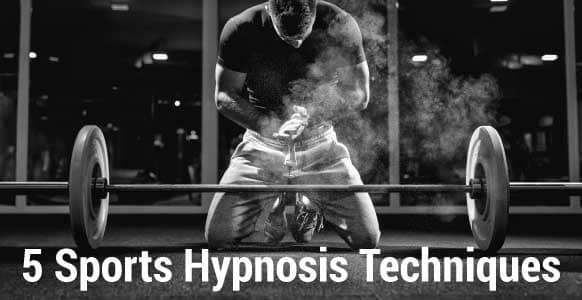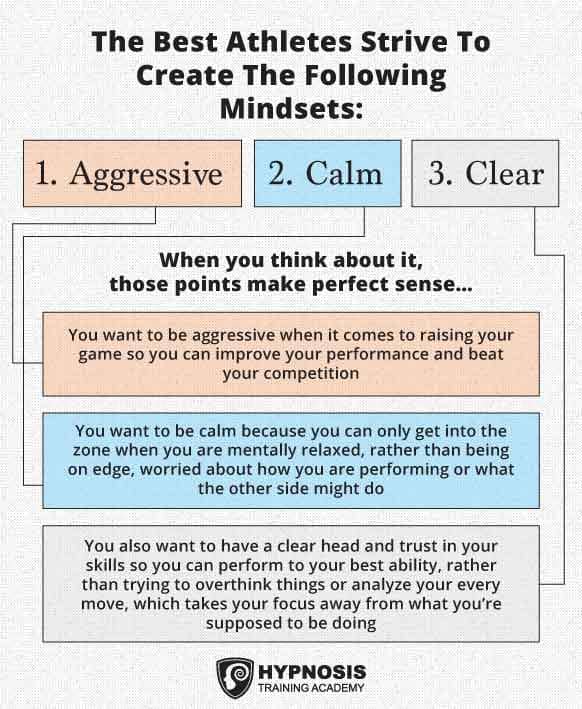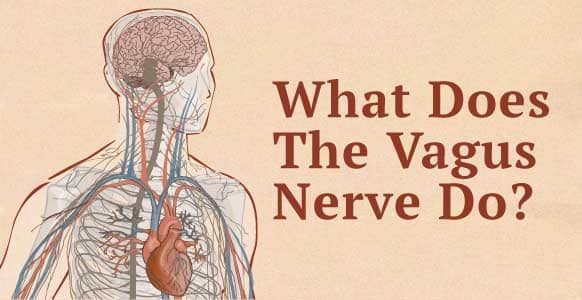
Did you know that you can use a kind of hypnotherapy known as sports hypnosis to increase athletic performance?
In fact, it can be used to help a subject – especially if they’re suffering from performance anxiety – overcome any mental obstacles that might be hindering their success.
Or you might even want to use sports hypnosis to meet some of your own athletic goals and to overcome any mental hurdles (excuse the pun) that are getting in your way.
What Can Sports Hypnosis Be Used For?
Sports hypnosis is based on the theory that, to perform at your best, you need to be mentally calm and alert, emotionally detached and in the present moment so you can focus on the task at hand. It can also be used to decrease anxiety and stress levels.
On top of that, sports hypnosis can help athletes to:
- Reinforce any established goals
- Increase their concentration
- Eliminate distractions
- Manage pain effectively
- Handle feelings of nervousness
- Boost their motivation
- Decrease performance anxiety
Of course, the term “sports hypnosis” doesn’t refer to a different kind of hypnosis than what you’re used to. It simply means hypnosis applied to the field of sports, using the same techniques that work equally well for so many other things.
So what techniques can you use to help someone improve their athletic performance?
We’ll get to that in a minute, but first up, let’s look at the importance of having the right mindset.
Improved Performance Is All About Getting Into The Right Mindset
According to sports and parenting psychologist, Jim Taylor Ph.D., the best athletes strive to create the following mindsets:
- Aggressive
- Calm
- Clear
When you think about it, those points make perfect sense…

According to sports psychologist, Dr. Stan Beecham, as many as 20% of the American population have some form of anxiety disorder. Dr. Beecham, goes on to say that anxiety is always associated with the future.
It’s only when your mind and body are focused on the now, in the present, that you can perform at your best. Your mind gets quiet and instead of thinking about what you have to do, you instinctively just do it.
It’s exactly the same thing that happens when you’re engrossed in any activity you enjoy. That’s why you can get so involved in your favorite hobby that you don’t even notice the time flying by. You’re caught up with what you’re doing and nothing else can interrupt or distract you.
If you practice hypnosis, you may notice that these experiences also occur during hypnotic trance.
It’s essential to your success – whether that being during your personal self-hypnosis practice or when working with a subject – that your mind is calm, quiet, and not anxious. That you trust your skills and abilities.
But one reason you might struggle with quieting your mind enough so you can successfully guide someone else (or yourself) into a hypnotic trance is due to performance anxiety, which is the pressure of performing and trying to do your best.
This is related to some of the main categories found in sports psychology, including:
- Arousal regulation – how excited you get. If you’re too relaxed, you can get sluggish and won’t be trying as hard as you might. If you’re too excited, you get stressed and start making mistakes.
- Goal setting – setting reasonable and achievable goals. Big long-term goals can be exciting, giving you something awesome to aim for, but they need to be broken down into short-term goals. When these short-term goals are achieved they give you the confidence and self-belief to go after the next short-term goal and the next.
- Imagery – creating mental pictures. This doesn’t just refer to images but to the full sensory range, which can then be used to rehearse a skill, to recall a success, and to predict an outcome attitude.
- Pre-performance rituals – an action done before every performance. These actions help get you fired up and ready to perform. They create the right level of excitement to get you in the mood for the game or performance.
- Self-talk – this refers to how you’re thinking. Obviously, positive thinking is key if you want to be able to perform at your peak, while negative thinking will be sure to slow you down, cloud your judgment, and make you second-guess yourself.
Why is mindset so important? Because your mind controls your body. And as you know, hypnosis gives you access to that part of your mind that has the biggest influence of all: your unconscious.
That’s all well and good. But how do you actually use hypnosis to increase your (or a client’s) athletic performance?
Here are a few hypnosis techniques to get you started.
5 Sports Hypnosis Techniques To Alleviate Performance Anxiety & Trigger A “Success” Mindset
1. Hypnotic Blitz

You could start by getting some performance parameters from your client of what’s happening when they’re doing well. Dig deep and elicit the resources that excited, motivated and helped them achieve “wins” when they were at their best.
What were they telling themselves? What emotions were running through their body? Where did they feel it? Where was their mindset?
Once you have them in trance, then replace the usual blitz themes of relaxation and comfort with the success resources you’ve elicited. These could be presence, a feeling of exhilaration, freedom, expanded consciousness, timelessness etc. You’re blitzing them based on what their unconscious mind uses to create peak performance.
This way you’re actually constructing the mindset of future success by getting all the behaviors, emotions and mental self-talk in place that support their highest performance.
2. Revivification

This literally means to give new life to something. In hypnosis, it refers to reliving a memory so that the experience is clear in your mind, including whatever emotions you felt at the time.
Just as with the Hypnotic Blitz above, begin by eliciting resourceful memories of their past peak performances. Linger around these memories so they make the emotions stronger and spread throughout their body.
You can also elicit their memories of times of strength, courage, determination, and willpower, where they’ve overcome obstacles and triumphed over fears to end up in a better place.
Symbols that come out from these experiences are powerful. You can ask them questions such as “What was that like?” to bring out metaphors specific to them. Then use those symbols and meanings in your hypnotic lecture during the trance.
For example, in some cases, people don’t actually want the physical trophies. What matters to them is what the trophies mean, what they represent. They’re symbols of success, of all the effort they put in and all the rivals they beat to get to the top.
Revivify the meaning of the trophies during your session. They’re a powerful symbol of their success.
3. Dynamic Mental Imagery (DMI)

Taking your subject on a hypnotic journey to find a special symbol (given as a gift from their unconscious mind) is a powerful way to help sports succeed.
Finding a symbol that stands for something physical takes the focus away from the physical process, which may have been scrutinized to such a degree that it becomes impossible to perform.
For instance, it’s not uncommon for athletes to choke when asked to take a penalty shot. Why? Because they feel pressure and the weight of the team on their shoulders. So instead of relaxing and simply performing the skill that they’ve practiced over and over and over, they become a bundle of nerves and mess things up.
To help them get over it, you can help them through the hypnotic journey by finding a symbol for doing great penalty shots. That symbol becomes a metaphor for the physical act of taking penalty shots, but now it’s a symbolic idea that acts as an organizing principle.
Your client could even take a hypnotic journey to meet their sports ‘god’ who becomes their mentor and gives them a gift or super-power to ensure that they would always be relaxed and focused at every penalty shot and would give matches their full and undivided attention.
The unconscious mind works on symbology and is the repository for all emotions. It loves and will respond really well to DMI! This kind of symbolic gesture might make them feel invincible!
4. The Non-Awareness Set

While DMI focuses on symbolic reality, the Non-Awareness Set focuses on the physical/mental reality. The idea behind the Non-Awareness Set is to put attention on something physically irrelevant, such as the pressure of the subject’s foot against the floor so that the unconscious mind can be free to operate the body.
The Non-Awareness Set creates a conscious/unconscious dissociation in the subject’s mind.
When you learn to do anything well, any skill, it eventually habituates to the unconscious mind operating the body during the skill. At first, it requires conscious attention to learn the skill. After a certain point, you can perform the skill automatically, without thinking about it.
For example, when you first learn to drive you have so many things to consciously think about: the gas, the brake, mirrors, speed, oncoming traffic, lanes, signs, and lights – it’s almost overwhelming.
But after a while, something changes and you just get in your car, multi-task all of these things – no problem. That’s because now the unconscious mind is operating the body, not the conscious mind (although it’s still there as well).
So as an example, maybe your client’s body can play well without them even realizing it. Using the Non-Awareness Set you can ask questions to take attention away from the things that they’re having difficulty with. So you might ask:
“What weren’t you aware of (during the play/game)?”
“What’s going on when you’re not aware of this?”
You’re moving attention away from the main focal point to leave unconscious attention there untouched, while their conscious attention is doing something else. The trick is to let the conscious mind focus on something meaningless, like the spin on the ball, whilst the unconscious attention is doing something relevant like hitting the ball.
5. Mind Bending Language

You’d use this to interrupt any negative or unhelpful thought loops and stop the vicious circle of negative self-talk. What kinds of things might your client be thinking that affect their performance?
“I’m an idiot. I’m going to fumble this. I’ll never make it to the goal line. I’m going to screw up.”
You need to scramble these thoughts so that they become harder to think. Do that by taking them through a Mind Bending matrix such as this:
You’re messing with their ability to keep those unhelpful thought loops going. This works for two reasons:
- There’s a shift in their attention, in the way they perceive something
- They can’t think in the old way because the new idea stretches their intellect so that the old concept becomes loose and no longer fits
While Mind Bending Language may not fix the entire problem, although often it does, it will certainly help loosen the concrete around the stuck problem, so the subject can never think about their issue in the same way again.
Their perspective will have changed for the better.
Famous Athletes Who Have Used Sports Hypnosis To Improve Their Performance
Another thing to remember is that hypnosis in sports is not a new thing. Its use has been documented as far back as the 1950s, when athletes such as Mary Lou Retton and Ingmar Johnson used hypnosis to prepare for important matches or events.
- Golfer Jack Nicklaus used hypnotherapy and visualization techniques to help him win 18 major championships.
- Tiger Woods has reportedly used self-hypnosis techniques since his early teens to help him focus and become one of the greatest golfers ever.
- Jimmy Connors reportedly practiced hypnosis before each of his U.S. Open victories.
- In 1996, Steve Collins used hypnosis to help him beat Chris Eubank for the World Boxing Organization’s Super-Middleweight title. Collins’ was focused on throwing two punches for every one of Eubank’s. In the end Eubank threw 300 punches, while Collins delivered more than 600.
- The Chicago White Sox hired a hypnotist in 1983 and made the playoffs that year.
- In 1973 Ken Norton, who was definitely the underdog, used hypnosis to help him defeat boxing superstar (and 7-1 favorite) Muhammed Ali.
The then Soviet Union took 11 hypnotists with their team to the 1956 Summer Olympics in Melbourne. The result? They came top of the medal table in all 3 categories.
By the time he was 20 years old, Mike Tyson was already the undisputed world heavyweight champion. His secret tool? Tyson told Britain’s Daily Telegraph that his manager brought in a hypnotist, John Halpin, to help make him more aggressive in the ring. It worked, and Tyson continued to see Haplin for hypnosis throughout his career.
Sports hypnosis has also been quite a trend for athletes who have competed in the Olympics.
- USA Olympic Skeet Gold Medalists worked with a hypnotist during the Beijing 2008 Olympics to develop a winning mindset
- Hypnosis also helped Billy Mills win his gold medal in the Olympics back in 1964.
- Olympian skier Shannon Bahrke mentioned in the official NBC Olympic Health and Fitness blog about how her hypnotherapist helped her overcome her fears by accessing her subconscious.
And the list goes on. Athletes from just about every sport have used hypnosis to give them the mental power to excel, including such famous names as Joe DiMaggio, Michael Jordan and Wayne Gretzky.

When you consider the number of professionals who’ve used hypnosis, and the outstanding results they obtained, there’s little doubt about the role of hypnosis as a powerful tool to help anyone enhance their performance and increase their athletic prowess.









![Yogic Breathing For Hypnosis: 3 Easy Techniques To Ground & Relax Your Clients Before Inducing A Hypnotic Trance [Includes Infographic] Yogic Breathing For Hypnosis: 3 Easy Techniques To Ground & Relax Your Clients Before Inducing A Hypnotic Trance [Includes Infographic]](https://hypnosistrainingacademy.com/wp-content/uploads/2019/05/yogic-breathing-for-hypnosis.jpg)

![[ADVANCED GUIDE] How To Master Hypnotic Regression Therapy - Part I: Essential Principles To Profoundly Transform Your Subject’s Emotional Trauma [ADVANCED GUIDE] How To Master Hypnotic Regression Therapy - Part I: Essential Principles To Profoundly Transform Your Subject’s Emotional Trauma](https://hypnosistrainingacademy.com/wp-content/uploads/2016/09/hypnotic-regression-therapy-essential-principles.jpg)

